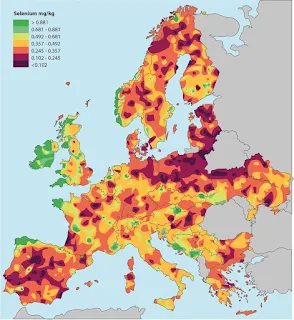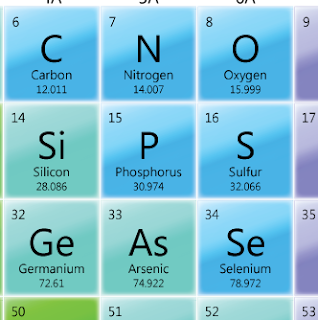 |
| Red and dark red areas have soil that is very low in selenium. |
Plant species that are rich in sulfur are invariably richer in selenium than non-sulfur accumulating plants growing in the same soils. The roots cannot discriminate between the two elements.
How can you tell which plants are rich in sulfur and selenium? Well, they stink!
Cabbage, broccoli, kale, turnips, mustard, onions, garlic, leaks etc.
If you were to name the cuisines that make the heaviest use of cabbage, onions etc., what regions spring to mind? Northern and Eastern Europe.
How about Chinese cuisines from Shandong to Hunan and Sichuan?
I am not talking about the cuisine of the wealthy people. People rich enough to eat significant amounts of meat almost never have selenium deficiencies because animals are accumulators of micronutrients. I am talking about the cuisine of the common peasant.
How about Indian cuisine? If our hypothesis is that cuisines that evolved in regions with selenium deficient areas tend toward, well, smelly...then one would expect some regions of India to be deficient in selenium.
As you can see, most of India is as deficient as eastern Germany, Poland and Belarus and northern Ukraine.
Correlation does not prove causality but it is fun to speculate.



No comments:
Post a Comment
Readers who are willing to comment make this a better blog. Civil dialog is a valuable thing.